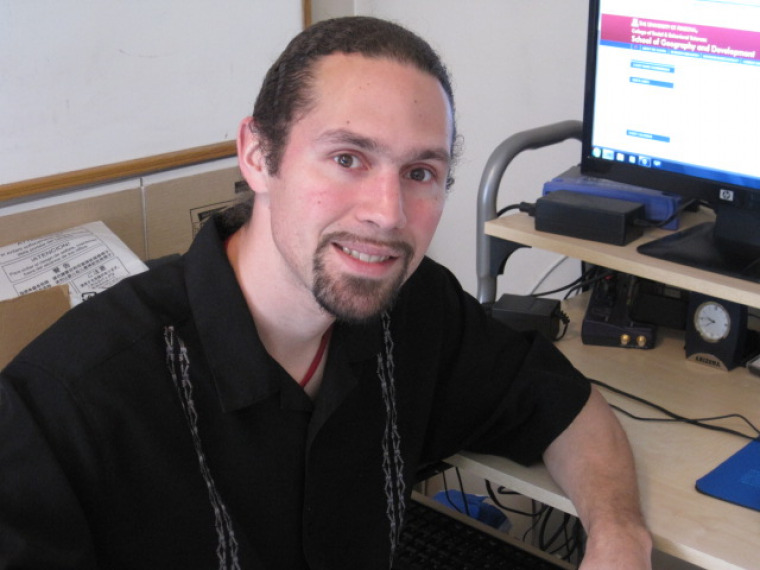Casey Kahn-Thornbrugh

Wuneekeesuk! (Good day!) My name is Casey Kahn-Thornbrugh and I am a Mashpee Wampanoag tribal member from Massachusetts. My family relocated to Albuquerque, New Mexico when I was in middle school, and I have lived in New Mexico and Arizona ever since. I have always been interested in weather, landscapes, and human cultures across Earth. This is the primary reason why I chose geography, with a focus on climate science, as my primary discipline of study. I am currently a Ph.D. student in the School of Geography and Development at the University of Arizona.
For my NASA Space Grant project, I am working with the Water Resources Department of the Tohono O’odham Nation, Tohono O’odham Community College (TOCC), and the Climate Assessment for the Southwest (CLIMAS) project to develop a culturally relevant climate science curriculum for Tohono O’odham K-12 and tribal college students. I will be surveying and interviewing community members and teachers on the Tohono O’odham Nation to learn about the aspects of weather and climate they feel are most important in their lives and for Tohono O’odham students to learn about. I will be developing the curriculum with the information from the surveys and guidance from the Water Resources Department, TOCC, and CLIMAS. Over the next year, this curriculum will be piloted through weather and climate teaching workshops offered in communities on the Tohono O’odham Nation. The output product will be a climate science curriculum that will be given to the Tohono O’odham Nation to be used to teach K-12 and tribal college students.
I was motivated to do this project after my three years of teaching geography and science classes at TOCC and from working with Tohono O’odham youth during summer science and agriculture-based camps out on the nation. In my experience, teaching science in ways that relate to people’s lives and culture makes science easier and more enjoyable for people to learn. In this way, I feel my project strongly contributes to NASA’s mission of attracting more students from underrepresented communities to participate in science.

